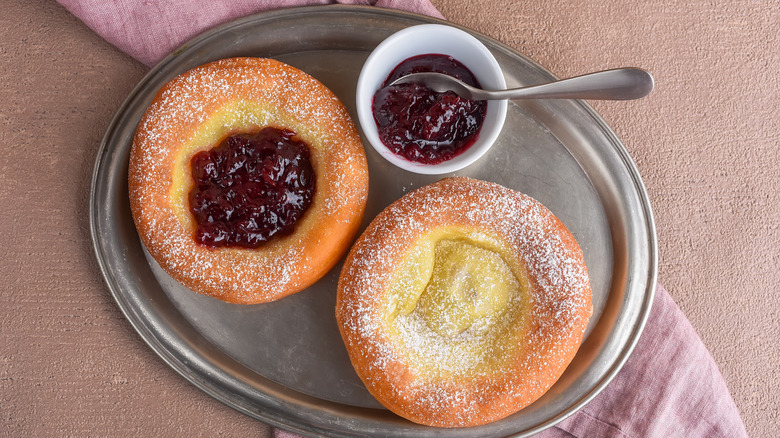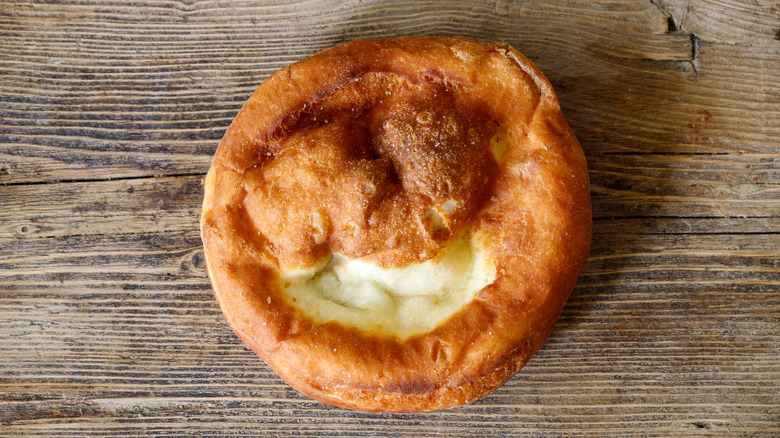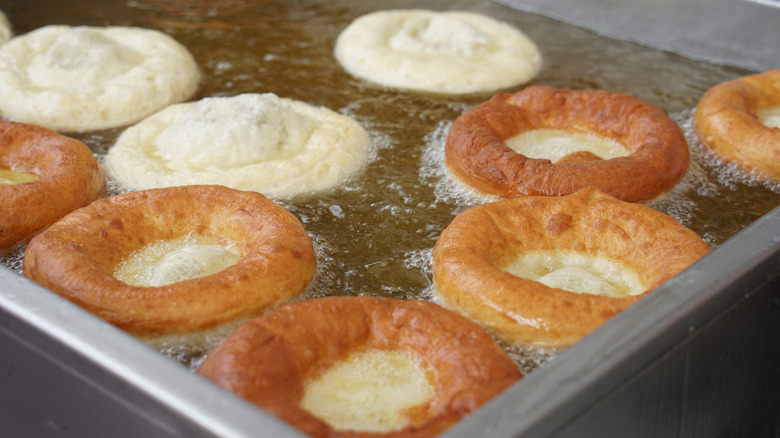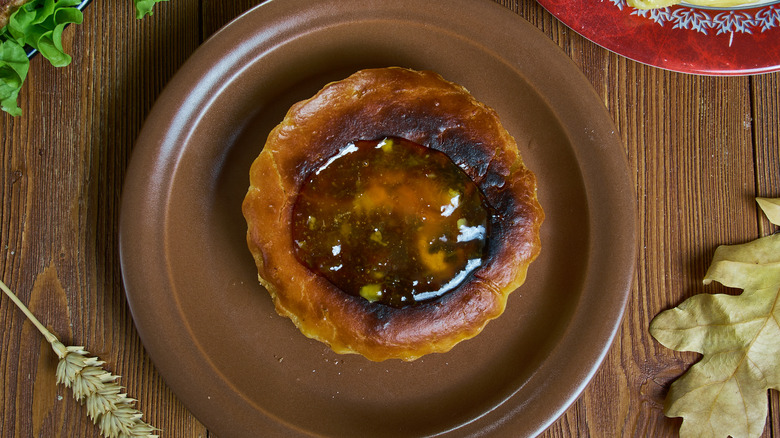Tirolean Kiachl Is Austria's Fried Take On The Croissant
The kiachl goes by many names. Depending on where you are — beer gardens, food stalls, or cafes in Western Austria (particularly the state of Tyrol), Old Bavaria, Franconia, or Thuringia — this pastry treat can also be called auszogne, knieküchle, kiacherl, knienudeln, or kirchweihnudeln, explains Munich Beer Gardens.
Though the name may change, the shape of the fried yeasty dough is similar: a dough ball that has been stretched in such a way so that the middle is thinned and the outer crust retains a thicker, chewier edge. The name Knieküchle means "knee cake," thought to resemble the shape of a knee that could have been used to shape the middle of the treat.
Fried in clarified butter and sprinkled with powdered sugar, the treat is a Bavarian specialty, notes Ester Kocht. Traditionally enjoyed during special occasions, holidays, and fairs, the kiachl lies somewhere between a croissant and a donut, a delicious pastry that can brighten an afternoon or be enjoyed alongside morning cups of coffee.
History of kiachl
Long before the festive kiachl pastries could be found at holiday markets and country fairs, the fried treats provided easy and affordable meals that hardworking farmers looked forward to enjoying at the end of a long day, notes Innsbruck.
Depending on a family's preferences and the area in which the pastry was made and served, kiachl could be either be presented as a savory dish accompanied by soup or filled with cabbage, or it could be served as a sweet treat topped with fruit compote. Pickled cabbage, known as sauerkraut, is a common side dish, notes Tirol Info, particularly during winter months, as it is thought to help digest dishes like the fried kiachl snack itself.
Fried in clarified butter, the golden crust of the pastry is also thought to have meaning. According to Angie's Web, the shape of the pastry — whether the center has been intentionally raised or sunk — represented certain religious associations; for instance, fluffy interiors were linked with Protestant cuisine while dropped holes in the middle of the pastry indicated the work of Catholic bakers.
How to make kiachl
Whether you stumble upon kiachl in a market or coffee shop, the treat is particularly delicious when enjoyed fresh, insists Angie's Web. Pastries that have been sitting for a day lose the center's crispy texture, and the fluffy, spongy crust grows tired.
Dressed as a savory treat with sauerkraut or served sweet with cranberry jam and powdered sugar, Tyrol Info instructs that finely ground flour, warm milk, dried yeast, eggs, butter, salt, sugar, and clarified butter are needed to make kiachl. After the ingredients are combined — ideally with an electric mixer (turn the setting to high) — small bubbles will form on the surface of the mix indicating it is time to leave the dough to rise.
When the dough is ready to be cut into pieces and shaped into individual kiachl, be sure that the middle is stretched thin and not punctured. The doughy shapes are then placed into warmed clarified butter to fry the pastry to a golden brown. Whether you want a sweet or savory filling for the treat's center is up to you.
Varieties of kiachl
Depending on whether you are craving a sweeter treat or a more savory and filling dish, the pastry base of the kiachl can complement a variety of toppings. While sauerkraut is traditionally served with the treat and tastes delicious when placed in the middle of the fried yeast dough, you have plenty of other options when it comes to dressing kiachl.
Several regions have taken on their own spin on the dish. For example, in the area known as Bruneck, kiachl is served with lemon-drizzled apples that have been fried in a batter of flour, egg, salt, milk, and rum, according to Velontour. And in the Leutasch valley, Seefeld explains that kiachl is prepared and served with ladles of wild cranberry jam and icing sugar.
If you're attempting to make kiachl at home, consider various fruits and jams or thinly sliced vegetables to spoon into the center of the fried pastries. We won't fault you if you try one of each!



